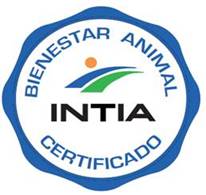Introduction to the challenge addressed
This is a demand from the large-scale distribution to DOP and IGP operators, which in turn is demanded by the end consumer. There is no scheme on the market that fits Navarra's production system.
Description of Innovation
INTIA is going to develop its own protocol, INTIA Animal Welfare, where the parameters and methodology for the assessment of animal welfare, specially designed for the type of predominant farms in Navarra (small and medium farms), will be collected. In farms under a DOP (Registered Designation of Origin) or IGP (Protected Geographical Indication) or PI (Integrated Production), where a part of the Animal Welfare requirements is included in their specifications. It is proposed as a complement to the requirements. One of its main characteristics is that the INTIA Animal Welfare protocol is a simple but complete scheme. It provides the consumer with information on how the animals are reared and which management systems are applicated and used in Navarra. The requirements of the IGP Ternera de Navarra and PI include a large part of the requirements of the animal welfare certificate. As mentioned above, the INTIA Animal Welfare protocol is in the process of validation. No problems have been encountered. It is an easy system to verify. The classification is well balanced (food and health are more considered than facilities and behaviour). The challenge is the recognition by large-scale distributors, as they initially recognised an Animal Welfare certification system that was not adapted to our type of farms of our region. It will be necessary to convince them that it is just as valid and fully adapted to beef cattle farms in Navarra. The development of the protocols and the validation of the method were implemented in 5 months. INTIA work as an auditor
|

